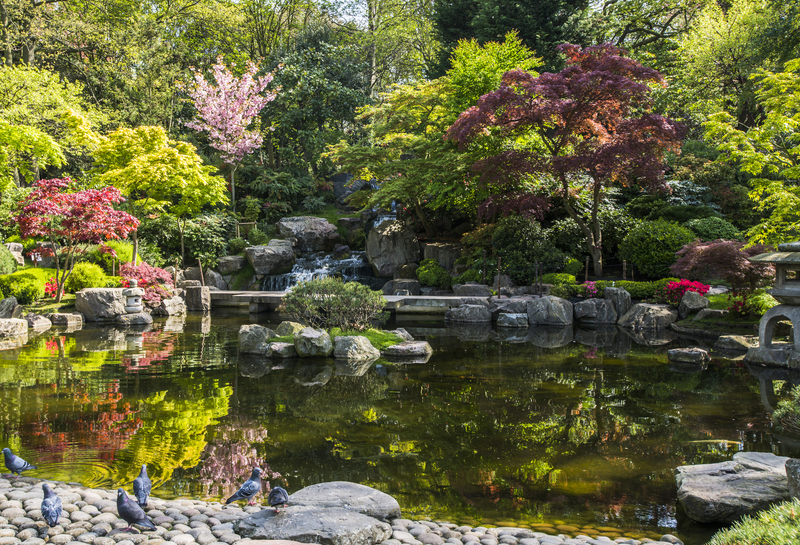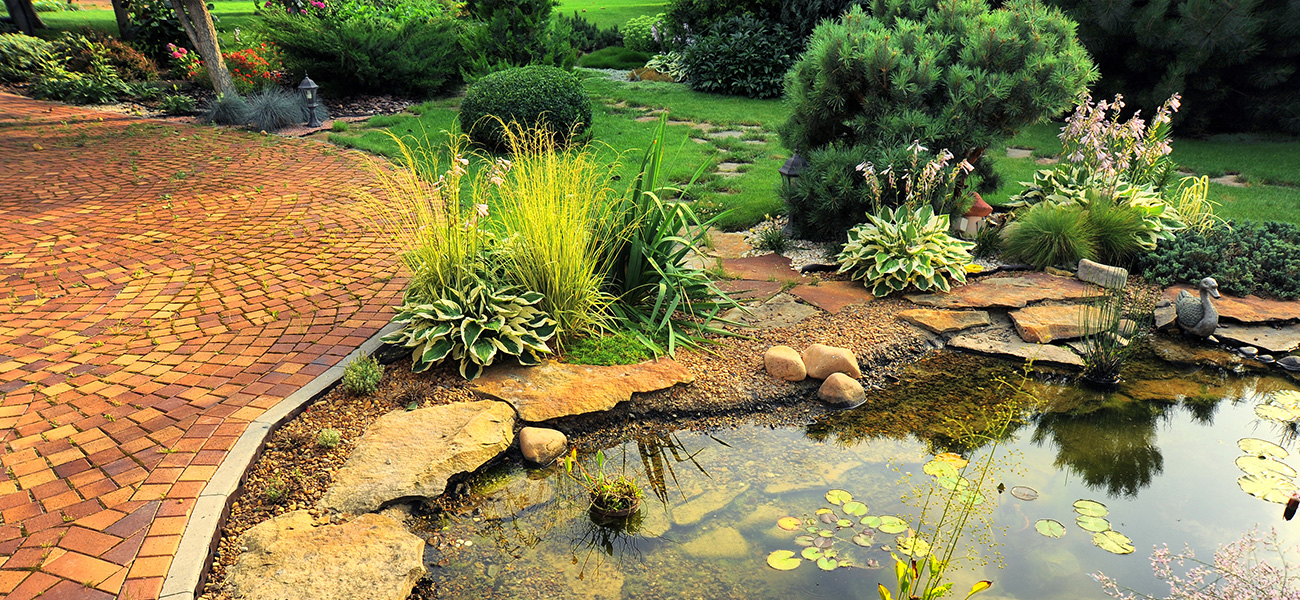Hedge Sculpting Mastery: Techniques and Shapes for a Stunning Garden
Posted on 18/08/2025
Hedge Sculpting Mastery: Techniques and Shapes for a Stunning Garden
Transform your landscapes into living works of art with the sophisticated practice of hedge sculpting. Dive deep into the craft, discover professional techniques, and explore shapes that elevate any garden's appeal.
Why Hedge Sculpting Is the Art Your Garden Needs
Hedge sculpting, also referred to as topiary, is more than just trimming overgrown bushes. It's a precise art form that merges horticultural technique with imaginative vision. Whether you're aiming for a whimsical garden maze, clean geometric lines, or fantastic shapes, mastering the fundamentals can make your green space truly stunning.
A sculpted hedge provides:
- Structure and definition to the landscape
- Visual interest throughout every season
- Enhanced privacy and wind protection
- A platform for creativity and expression

Essential Principles of Hedge Sculpting
The journey to hedge sculpting mastery begins with understanding key principles, from plant selection to tool care. Focusing on technique ensures healthy, lush hedges and long-lasting shapes.
Selecting the Best Plants for Hedge Sculpting
Not all shrubs are suitable for hedge trimming into precise shapes. The best candidates for hedge sculpting have small leaves, dense growth, and a willingness to rebound after a trim. Consider these classic choices:
- Boxwood (Buxus sempervirens) - Synonymous with topiary, favored for its dense foliage and adaptability
- Yew (Taxus baccata) - Excellent for intricate shapes due to slow growth
- Privet (Ligustrum) - Fast-growing, good for lush, green walls or less delicate forms
- Holly (Ilex aquifolium) - Shiny leaves, great for bold and formal designs
- Euonymus, Lonicera, and Escallonia - Versatile for various climates and artistic ambitions
Timing Your Hedge Sculpting for Best Results
Certain periods of the year are optimal for trimming hedges. The general rule is to avoid heavy sculpting during the peak growing season or winter dormancy. The ideal times are:
- Late spring, after new growth has hardened off
- Late summer or early autumn, allowing recovery before winter
Pro tip: Minor "tidying" can be performed throughout the year as needed, but always avoid cutting during frost.
Tools Every Hedge Sculptor Should Own
- Manual hedge shears - Allow for precise, clean cuts
- Powered hedge trimmers - Ideal for shaping long or tall hedges quickly
- Topiary shears - Perfect for intricate shapes and finishing touches
- String, stakes, and frames - Assist in establishing straight lines or complex curves
- Sharp secateurs - For selective trimming of thicker branches
Maintain your tools sharp and clean to avoid disease transmission and encourage healthy regrowth.
Hedge Shaping Techniques: The Path to Mastery
Achieving professional-quality garden hedge sculptures requires patience, an understanding of your plant's natural growth, and carefully developed skills. Here are the fundamental techniques every aspiring sculptor must master:
1. Clipping for Geometric Precision
- Flat tops and straight sides: Use string stretched between stakes as your guide. Keep shears parallel to the string for a professional, crisp finish.
- Tapered edges: Slightly slope the hedge sides so the base is wider than the top, ensuring lower branches receive sunlight and minimizing "leggy," thin growth.
2. Freestyle and Artistic Topiary Shaping
- Wire frames: For elaborate animal, spiral, or object forms, pre-made topiary wireframes can guide your hand and help plants fill the desired silhouette.
- Gradual refinement: Sculpt bold shapes in rough cuts first, then refine details over several sessions as the hedge regrows and thickens.
Patience is vital--complex shapes may take years to fully realize, especially if starting new plantings.
3. Maintaining Healthy Growth Patterns
Vigorous but careful pruning encourages lush, compact growth. Remember:
- Avoid heavy shearing into bare wood. Most hedge shrubs sprout best from green growth, not old branches.
- Thin dense areas to allow air and light to reach the interior, reducing disease risk.
4. Creating Eye-Catching Topiary Features
- Balls and domes - Use stakes and guide strings for symmetry. Cut lightly and often for smooth curves.
- Spirals and cones - Start with a cylinder, then gradually slice away to reveal your chosen shape. Spirals are easiest with upright evergreens.
- Animal forms - Work from simple to complex; frame support is essential when beginning.
- Arches and tunnels - Train multiple plants together, tying growth onto a shaped frame across a path.
Most Popular Hedge Shapes and Their Aesthetic Impact
Without limits, your hedge sculpting ideas can run wild. But some shapes have risen above the rest for their time-honored beauty and garden-enhancing effect.
Classic Hedge Forms for Formal Gardens
- Box and rectangle - Define beds, walkways, and property lines with clean linear shapes. Widely used for traditional English gardens.
- Domes and spheres - Bring softness and visual flow. Grouped domes create a "cloud" effect for modern or romantic settings.
- Cones and pyramids - Add vertical interest, anchor borders, and draw the eye upward.
Modern and Artistic Hedge Creations
- Spirals - Dynamic and contemporary, spirals make striking focal points near entrances or along main paths.
- Animal topiary - Delight visitors with fanciful living sculptures--dinosaurs, peacocks, or playful dogs.
- Letters and logos - Personalize gardens for homes or businesses with custom green signage.
Architectural Features and Living Structures
- Hedge arches - Frame garden entrances and create magical walkways.
- Maze and labyrinths - A staple of grand estates; these complex layouts encourage exploration and showcase hedge artistry at scale.
- Lollipop standard - A single trunk with a perfectly rounded canopy, ideal for patios or as accent pieces.
Step-by-Step Guide to Shaping a Hedge
Ready to create your own hedge masterpiece? Here's a detailed step-by-step process to ensure each cut adds to your garden's character:
- Plan your design: Sketch your desired shape, consider available space, and choose a suitable plant species.
- Install guides or frames: For geometric or complex forms, set up strings, stakes, or wireframes before you begin cutting.
- Initial shaping: Start with gentle, broad cuts. Focus on removing excess bulk, always stepping back to assess symmetry.
- Refining the form: Make smaller, finer cuts to even out the surface and bring out subtle contours. Use topiary shears for detail work.
- Encourage fullness: Prune lightly around the edges to stimulate dense growth, preventing gaps and maintaining a healthy, vibrant appearance.
- Clean up and care: Rake away clippings, inspect your hedge for pests, and water well--especially after significant shaping.
Advanced Topiary Tips from Hedge Artists
- Shape gradually: Don't rush design changes--plants need time to regrow and adjust.
- Use perspective: Slightly oversize distant shapes to balance visual effects from primary viewpoints.
- Maintain symmetry: Use measuring sticks or templates for repetitive or mirrored forms.
- Winter watch: Avoid heavy pruning before freezes, as exposed cuts are vulnerable to cold damage.
- Regular feedings: Fertilize at appropriate times to fuel recovery and vigorous regrowth.
- Incorporate contrasting colors: Mix variegated or differently-hued evergreens for bold outlines or multi-tone features.
Avoiding Common Pitfalls in Hedge Sculpting
The journey toward hedge sculpture mastery can have challenges. Watch out for these common missteps:
- Over-shearing: Excessive cutting can stress plants and lead to bare patches.
- Lack of sunlight: Tall hedges or flat tops can shade lower foliage, causing dieback. Taper sides to avoid.
- Ignoring plant health: Monitor regularly for insects or fungal issues and address promptly to avoid loss of shape.
- Neglecting soil quality: Feed and mulch as needed--a strong root system supports lush top-growth.
Seasonal Maintenance for Stunning Hedge Sculptures
Beautiful hedges are not a one-time achievement. Regular, seasonally appropriate care ensures your living artwork remains healthy and eye-catching.
Spring
- Light pruning to shape new growth
- Feeding with balanced fertilizer
- Checking for pest activity as plants awaken
Summer
- Major shaping and creative sculpting sessions
- Regular watering during dry spells
Autumn
- Final trims for the season; avoid heavy cuts late in fall
- Mulch to protect roots over winter
Winter
- Minimal pruning--limit to removing broken or dead branches
- Inspect frames and guides for weather damage
Inspiring Hedge Sculpture Ideas for Every Garden
If you're searching for hedge sculpting inspiration, consider these crowd-pleasing shapes for your next project:
- Interlocking circles or waves for a modern border
- Animal silhouettes flanking paths or entrances
- Twisted spirals for corner accents
- Multi-level cloud pruning for a Zen-inspired look
- Mini-mazes for family gardens and interactive spaces

Conclusion: Mastering the Art of Hedge Sculpting
Hedge sculpting mastery opens endless possibilities for transforming your landscape into a unique masterpiece. By selecting the right plants, mastering fundamental techniques, embracing imaginative shapes, and maintaining regular care, every gardener can cultivate hedges that are healthy, enduring, and visually stunning.
Whether you gravitate towards traditional forms or inventive topiary, the art of hedge shaping offers a rewarding blend of creativity, horticultural skill, and lasting beauty. Share your passion, experiment with new designs, and let your garden stand out as a living sculpture for years to come.
Frequently Asked Questions: Hedge Sculpting
- Q: How often should I trim my sculpted hedges?
A: Most hedges benefit from 2-3 trims per year, with minor corrections as new growth appears. Topiary forms may require more frequent light touches. - Q: What is the best beginner shape for hedge sculpting?
A: Balls, domes, and rectangles are the easiest starting points for those new to hedge shaping. - Q: Can hedge sculptures be created with flowering shrubs?
A: Certain flowering shrubs (like lavender or rosemary) work for looser, informal shapes but are less suitable for crisp, geometric forms. - Q: What should I do if my hedge shape becomes lopsided?
A: Use guides, trim carefully, and allow regrowth in thin spots--patience and gradual correction are key.
Begin your hedge sculpting journey today, and turn your garden into a stunning showcase of living art!

